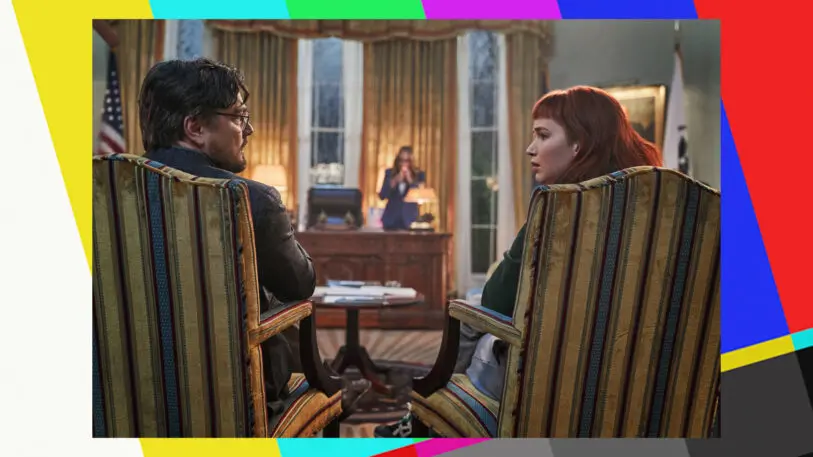Recently, I canceled my subscription to Disney+, the streaming service, a little less than four weeks after signing up. This was not a rash decision, but a calculated one. I only joined to watch one thing (the much-hyped Beatles documentary Get Back) and knew I would quit before getting billed for a second month. Moreover, I already knew I wasn’t so into the basics of the Disney+ catalog—because I did this same join-and-quit exercise 18 months ago, to watch Hamilton.
It turns out that this behavior isn’t unusual. In fact, the rise of mercenary streamers—who join a service to take in a single high-profile series or movie, then promptly quit—has become a headache for players in the ultracompetitive streaming-video-on-demand business. Traditionally, one of the attractions of a subscription model has been signing up customers who passively stick around, absorbing fee hikes out of sheer habit. But consumers are changing. And increasingly, the streaming wars aren’t just about attracting customers, but retaining them.
Take Disney+, for example. According to data from subscription-business tracker Antenna (first reported in the Wall Street Journal), the release of Hamilton sparked one of that service’s peak new-customer moments, attracting hundreds of thousands of sign-ups. But 30% of those customers left within a month. And about half vanished within six months.
Much the same happened when HBO Max released Wonder Woman 1984, when Apple TV+ put out the Tom Hanks vehicle Greyhound, and when Peacock kicked off its coverage of the Tokyo Olympics—a huge influx of sign-ups, roughly half of which had jumped ship a few months later.
On one level, these tentpole releases are doing their job. Keeping even half of new subscribers feeds the business. (Disney+ added a better-than-expected 11.8 million subscribers in its most recent fiscal quarter; Antenna data suggests that about 200,000 signed up the day Get Back was released.) But mercenary streaming customers present a twofold challenge: the nonstop pressure to raise new tentpoles—and to make sure there’s enough under the tent to make the newcomers stay.
Coming up with a steady supply of zeitgeist-shaping, can’t-miss cultural products, and compiling a crowd-pleasing library of evergreen content is exactly as hard as it sounds. But the effort to do so is rippling out into—and reshaping—the broader entertainment landscape. Certainly, it’s helped turn the Academy Awards into a streaming-centric phenomenon: Netflix, Apple TV+, and Amazon combined for nearly 40 Oscar nominations this year. Netflix, in particular, seems bent on producing exclusive must-sees. It racked up 27 nominations for films including buzz-makers like Don’t Look Up and The Power of the Dog. And it has already announced a slate of 61 English-language live action films for 2022, plus another 25 animated and foreign-language offerings.

A price hike in the face of an increasingly fickle market may seem foolhardy. And for all its momentum and might, even Netflix has acknowledged slower growth coming out of the locked-down pandemic era. But the company may be thinking less about whether it’s starting to hit a ceiling and more about locking in a customer base that promises a profitable floor. If it works, the move not only demonstrates customer loyalty as a flex to Wall Street, but also underscores to streaming consumers that there’s a critical divide—the services you’re really committed to, and the ones you can take or leave depending on what’s hot this month.
Given the proliferation of streaming services, it’s become undeniable that there’s a shakeout underway, however gradual. But it’s a shakeout that should be considered not through the producer side, but through the consumer side. Nobody can watch everything that’s streaming these days, let alone afford it all. What matters isn’t who offers the most variety at the best price but what individuals prioritize as we balance entertainment desires against pocketbooks. That’s why mercenary streamers are on the rise—and arguably pivotal.

In my case, I took advantage of my one-month dance with Disney+ to enjoy a Wes Anderson movie and check out WandaVision, a series I’d been curious about. This wasn’t enough to make me a subscriber, but I sure got my $7.99 worth. And that mindset just adds one more layer of complication to the streaming wars. Perhaps Netflix is trying to establish itself as something like a utility: a given, a default, the must-have that comes before all the wants. Other services have other propositions—HBO Max as prestige TV destination, Disney+ for parents—which they hope will hook consumers who sample the latest buzzy hit. But they’re all dealing with the new reality of mercenary streamers who have to be won over not just once, but again and again. We’re looking forward to the next awesome and unique entertainment spectacle that any given service has bankrolled—and to quitting as soon as we’ve watched it.
Rob Walker writes about design, business, and other subjects; his newsletter is The Art of Noticing.
Recognize your brand’s excellence by applying to this year’s Brands That Matter Awards before the early-rate deadline, May 3.
